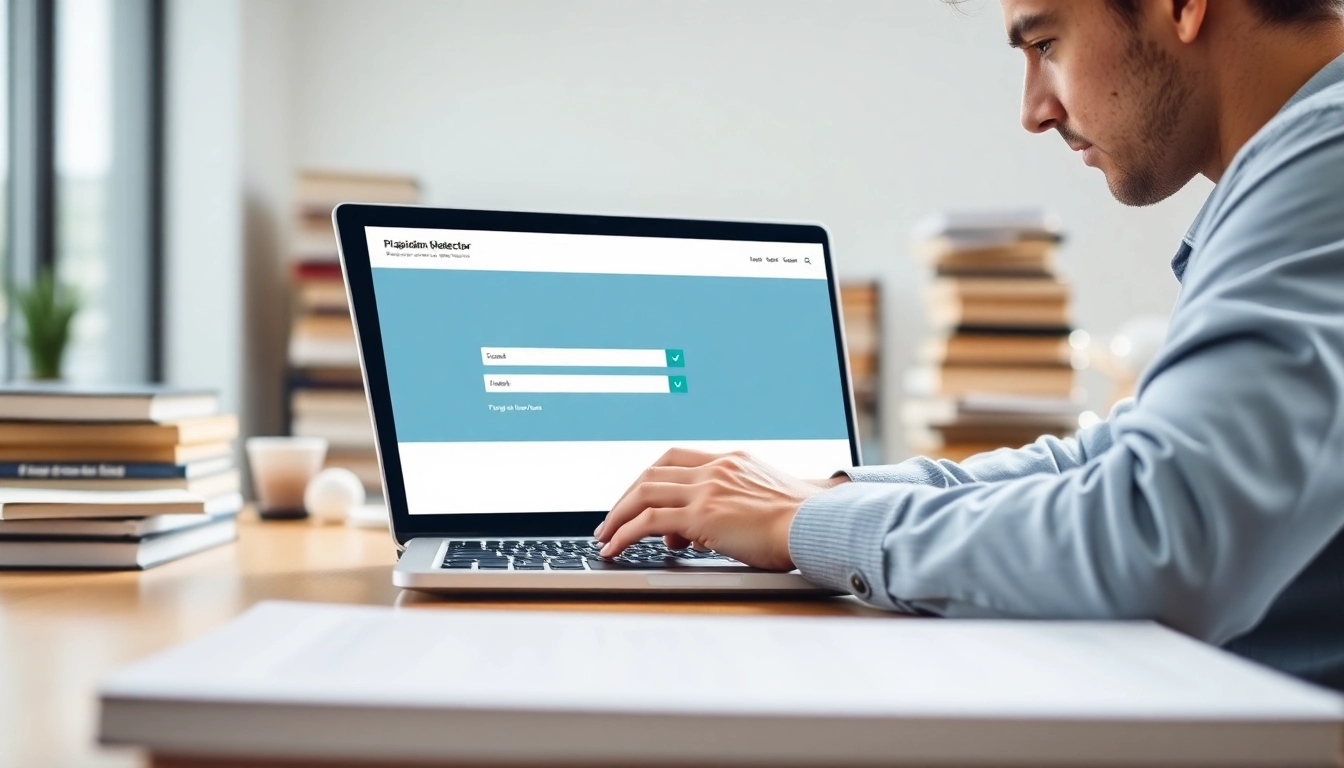Understanding Plagiarism and Its Impacts
What is Plagiarism?
Plagiarism is the act of taking someone else’s work, ideas, or expressions and presenting them as your own without proper acknowledgment. This unethical practice can occur in various forms, including copying text directly (known as direct plagiarism), paraphrasing someone else’s ideas without citation (known as indirect plagiarism), or even self-plagiarism, where an individual reuses their own previously published work without permission or citation. In the realms of academia, journalism, and professional writing, plagiarism is taken very seriously, as it undermines the integrity of the discipline and the efforts of genuine researchers and writers.
The Consequences of Plagiarism
The consequences of plagiarism can be severe. For students, the immediate repercussions often include failing grades, disciplinary action, or even expulsion from educational institutions. For professionals, being caught plagiarizing can lead to termination of employment, loss of reputation, and potential legal consequences. Beyond personal implications, plagiarism contributes to a culture of mistrust and diminishes the value of original thought in various fields. In the digital age, where information is readily accessible, the challenge for individuals and institutions is to promote academic honesty while also providing the necessary tools to ensure originality in work.
Why Use a Plagiarism Detector?
Utilizing a plagiarism detector is essential for anyone who produces written content. These tools identify potential instances of plagiarism, allowing users to rectify issues before submission or publication. They work by scanning documents and comparing their text against extensive databases to find similarities with published works. Furthermore, plagiarism detectors can help writers develop better research habits, enhance their writing capabilities, and maintain the integrity of their work. With an array of solutions available, understanding the functions and limitations of these tools is crucial for anyone interested in academic or professional writing.
Features to Look for in a Plagiarism Detector
Accuracy and Reporting
One of the primary factors to consider when selecting a plagiarism detector is its accuracy. An effective tool should thoroughly scan the internet, academic databases, and previously submitted works to provide a comprehensive analysis of any matches found. Additionally, a good plagiarism detector should offer detailed reporting, highlighting specific matches and their respective sources, allowing the user to clarify or properly cite any borrowed content. Some advanced detectors even go further by providing a similarity percentage, which quantifies the extent of potential plagiarism in the text.
User-Friendliness
The ease of use of a plagiarism detector is another critical feature. The interface should be intuitive, allowing users to upload their documents easily or paste their text into a designated field. Ideally, the tool should provide a straightforward process that minimizes steps and clearly outlines results. Users may also prefer tools that facilitate direct comparison features. This makes it easier to assess problematic sections and offers streamlined functionality for those with varying levels of technical proficiency.
Supported Formats and Integration
Another aspect to consider is the types of document formats supported by the plagiarism detector. Users benefit from tools that can handle a variety of file types (e.g., .docx, .pdf, .txt) as this adds flexibility to their usage. Moreover, integration capabilities with popular writing software or educational platforms can greatly enhance efficiency, allowing for seamless checks during the writing process.
Top Competitors of Plagiarism Detectors
Comparison of Free vs Paid Services
The market for plagiarism detection commonly presents both free and paid services, each with their own merits and drawbacks. Free services like DupliChecker or Grammarly’s plagiarism checker may be attractive initially due to zero costs, but they often come with limitations, such as less comprehensive databases or fewer features. Conversely, paid services typically offer more robust tools and features, such as advanced reporting, detailed originality scores, and access to larger databases. Schools and businesses considering tools for group use may prefer the subscription-based models that often come with bulk discounts and added features specific to educational settings.
Analyzing User Reviews and Feedback
User reviews and feedback play a pivotal role in distinguishing the effectiveness of various plagiarism detectors. Analyzing reviews provides insights into user satisfaction, the accuracy of the detection tools, and overall customer service experiences. Consumers often report their experiences with both efficiency in detection and usability of the interface. Notably, feedback highlighting concerns with customer service, response times, or the perceived value of the tools can significantly influence potential users’ decisions, providing essential information needed for selection.
Case Studies from Leading Plagiarism Checkers
Case studies from established plagiarism checkers, such as Turnitin and Grammarly, illustrate the effectiveness of their technologies and how they’ve successfully aided institutions in upholding academic integrity. For example, Turnitin has collaborated with universities to implement systematic checks on submissions as part of their grading processes, showcasing significant reductions in cases of plagiarism. Alternatively, Grammarly’s technological advancements in AI have empowered countless writers and students globally to detect and improve their writing, effectively reducing unintentional plagiarism risks.
Best Practices for Avoiding Plagiarism
Citing Sources Correctly
A key strategy for avoiding plagiarism is mastering the practice of citing sources correctly. Different academic fields require adherence to various citation styles—such as APA, MLA, or Chicago—and understanding these styles allows writers to properly attribute ideas and materials to their original sources. Awareness of the expectations of different audiences can guide writers in choosing the appropriate format for documentation, thereby enhancing the credibility of their work.
Paraphrasing Techniques
Effective paraphrasing is another critical skill for writers looking to maintain originality while using existing ideas. This involves rephrasing the original text while maintaining the core message. Writers should strive to modify sentence structures and utilize synonyms while ensuring that the original meaning is preserved. To enhance the effectiveness of paraphrasing, it helps to fully comprehend the original material before attempting to recreate it in one’s own words. Incorporating personal insights or examples can also aid in providing a unique spin on established information.
Utilizing Plagiarism Detectors Effectively
While plagiarism detectors are invaluable tools, using them effectively is key. Writers should make the checks a habitual part of their writing process, ideally submitting their work through a plagiarism detector before final submission or publication. It is prudent to scrutinize the results of the detection thoroughly. This includes not just looking for matches but also considering context and the appropriateness of citations. Educating oneself on areas of concern highlighted in the report can improve future writing and research skills, thereby fostering greater originality over time.
Future Trends in Plagiarism Detection
AI and Machine Learning Innovations
As technology continues to evolve, AI and machine learning are poised to reshape the landscape of plagiarism detection. Future detection systems are expected to leverage more sophisticated algorithms that can understand context and meaning more deeply rather than merely spotting textual matches. This means that plagiarism detection tools may not only identify copied sections but also detect instances of ‘idea theft’—where the essence of an idea is borrowed without appropriate credit. Such innovations could be a game changer for academic integrity.
Expanding the Use of Plagiarism Detectors in Education
The rise in digital education environments necessitates an expanded role for plagiarism detectors within academic contexts. Institutions are increasingly integrating these tools into their learning management systems to promote academic honesty among students. Such a proactive approach ensures that students learn proper citation practices while catching instances of unintentional plagiarism before they become significant issues. As educational institutions continue to prioritize integrity, the demand for reliable and effective plagiarism detection solutions will likely grow.
Anticipating Changes in Copyright Laws
As the digital landscape evolves, ongoing debates surrounding copyright laws will influence how plagiarism detectors operate and what they are tasked with identifying. Potential changes in regulations could lead to more robust tools capable of identifying not just exact matches but also more nuanced forms of content theft. Keeping abreast of evolving legal frameworks surrounding intellectual property will be essential for developers in this field, as adapting to these changes will enhance the effectiveness and legality of plagiarism detection practices.









